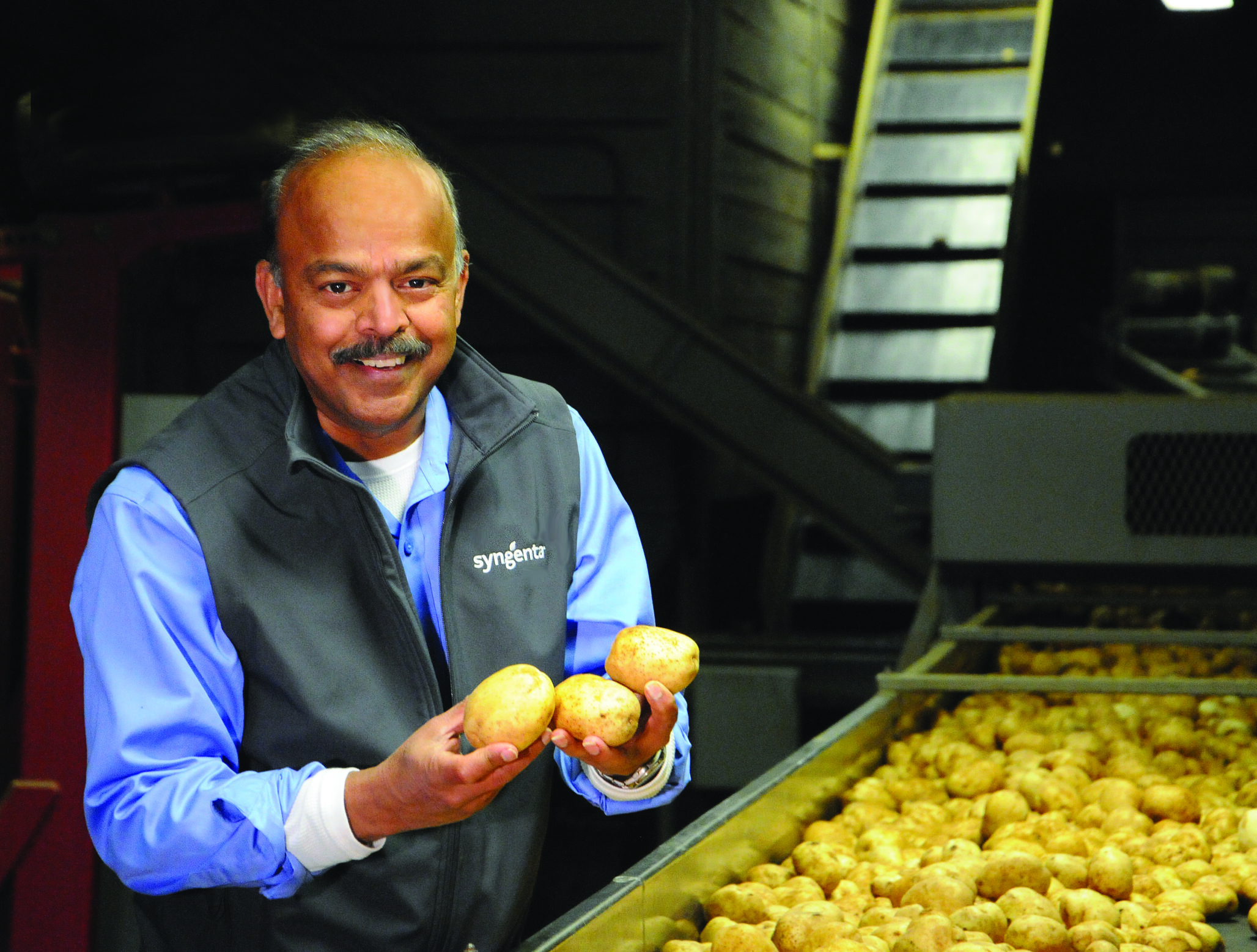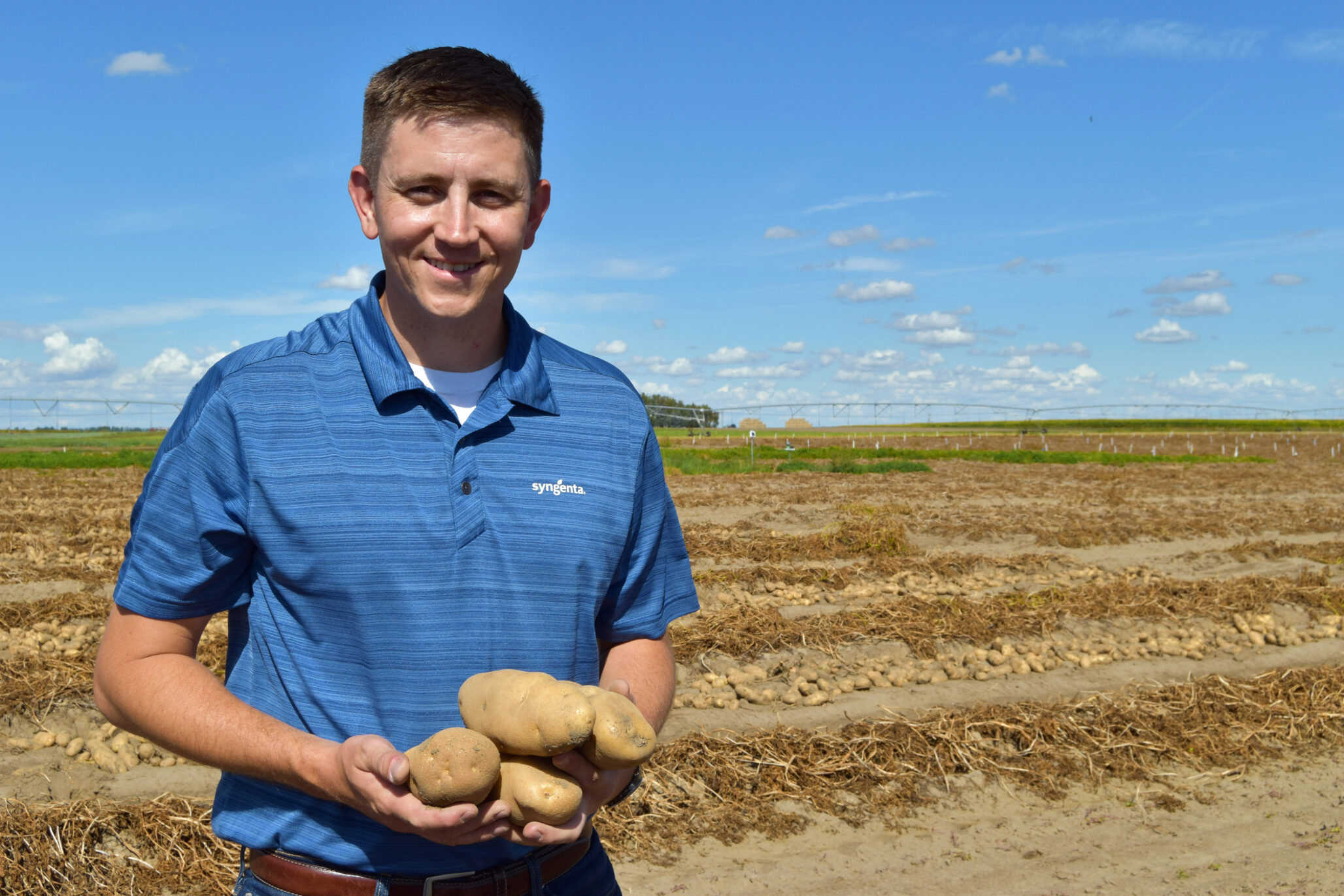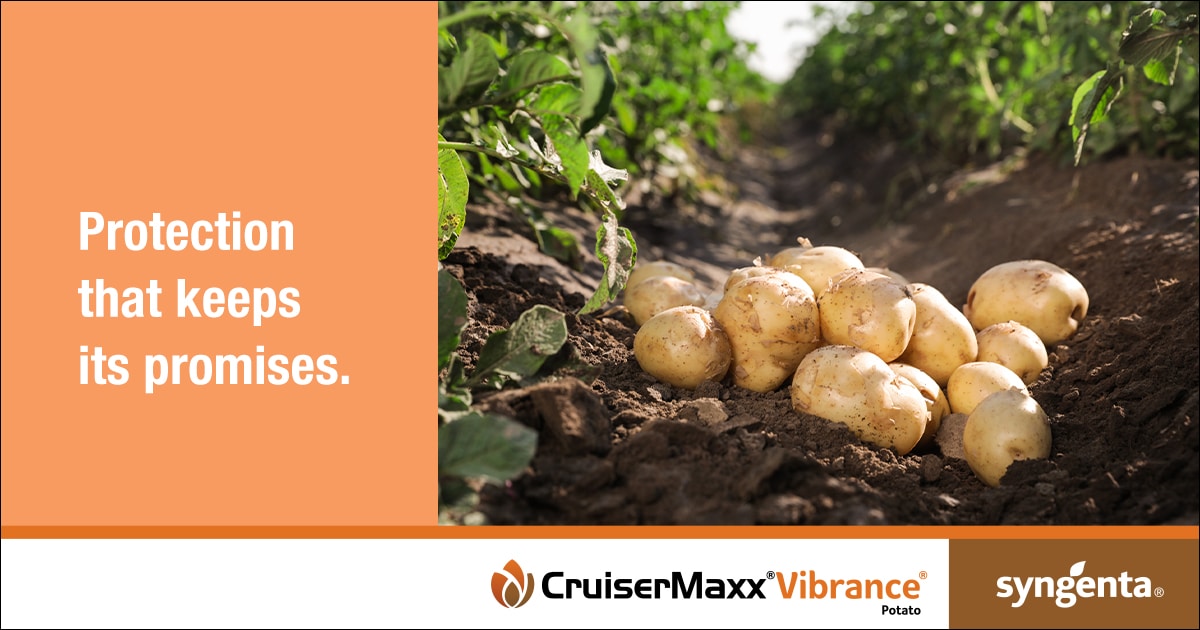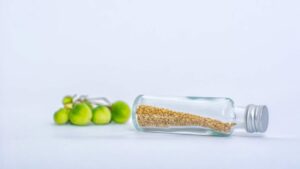Seed potato treatments do more than protect against disease, ward off pests and maximize yield. They protect the longevity of the industry itself.
“When growers use treated seed potatoes that are certified, they’re protecting the quality of the crop this year and for years to come,” said Kiran Shetty, Technical Development Lead for Specialty Crops with Syngenta.
Certified seed is critical for maximizing yield potential and quality in a crop that requires an ever-increasing investment to be successful. Additionally, certified seed maintains the value traits of the crop, offers traceability, ensures varietal purity and can even create access to premium markets. In short, it’s essential. And the sure-fire way to maximize the seed potato product is to start with an effective seed treatment regime. That’s where Syngenta’s CruiserMaxx® Potato Extreme comes in.
Shetty explained that seed potato treatment is largely done on farm, which can cause plenty of variations depending on weather, treating and storage conditions and timing. That makes using an effective seed treatment a must. He added that about 85% of the seed potato crop is cut, meaning it’s divided into smaller pieces to maximize output.

Kiran Shetty, Technical Development Lead for Specialty Crops with Syngenta .
“Once you cut the seed, you increased the opportunity for development for diseases. You really made it a sitting duck,” he said.
The first seed potato treatments—offered 40 years ago—were mostly dust-based that protected the cut surface for a certain period of time. In Canada, the treatments were talc based. By the late 1990, Syngenta pioneered a liquid-based treatment that included an insecticide along with a fungicide and drying agent so the seed would heal. This was developed by Shetty’s team at Syngenta.
The latest generation—CruiserMaxx Potato Extreme—includes two fungicides for early-season control of key seed- and soil-borne diseases, protection against certain insect pests and proactive management against resistance from pathogens.
But Shetty and his team didn’t stop there. In 2012, Syngenta launched CruiserMaxx Vibrance® Potato, another liquid seed potato treatment that improves root structure and stand establishment. In addition to broad-spectrum disease control, it ensures stronger, healthier roots for higher crop productivity. Worldwide field trials show higher and more consistent yields for all major crops, including potatoes.
And brand new is Vibrance Ultra Potato, a liquid fungicide only (no insecticide) seed treatment that provides broad-spectrum protection against key seed- and soil-borne diseases, including control of seed-borne late blight and suppression of pink rot.
Dan Maxfield, Syngenta Agronomic Services Representative for the Pacific Northeast, said it is this variety of quality products that helps his sales team support the growers.

Dan Maxfield, Syngenta Agronomic Services Representative for the Pacific Northeast .
“When it comes to potatoes and pest problems, it’s always a moving target of pressures,” he said. Beetles, aphids and leaf hoppers top the list in the canopy, while white mold (stem rot) and wireworm infestations are at work in the soil.
“Potato growers have become a lot more proactive and educated about the challenges that come with their crops,” he said. “The pest shift in the area can really be dynamic. For example, there was no deep freeze in this area last winter so many pests were not killed off. That meant a new course of treatments for this year.”
The Cruiser® line has truly been a game changer, he said. It offers a multitude of defenses when growers need them. But as the game continues to change, Syngenta keeps pace, developing new products to meet the demand. That’s where Minecto® Pro comes in, a non-neonicotinoid insecticide.
“Minecto Pro has really been important to manage foliage pests and provide a rotation away from a foliar neonicotinoid product,” Maxfield said. “It has excellent control over the most prevalent potato pest, the Colorado potato beetle, as well as difficult-to-control insects, such as aphids and psyllids.”












